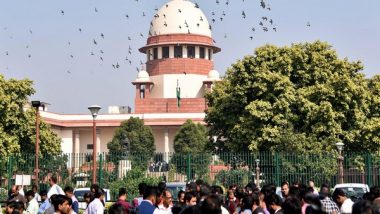New Delhi [India], May 13 (ANI): The Supreme Court on Friday dismissed an appeal challenging the Patna High Court's order giving a go-ahead to the Municipal Corporation for proceeding with the demolition of the iconic Collectorate Building in the city.
A bench of Justices DY Chandrachud and Surya Kant declined to entertain the plea and stated in the order, "We are not inclined to entertain the Special Leave Petitions under Article 136 of the Constitution. The Special Leave Petitions are accordingly dismissed."
Also Read | Kashmiri Pandit’s Murder: SIT Formed To Probe Attack After Outrage in Valley.
The bench observed, "If it was a building that housed our freedom fighters it could be a heritage monument. This was used by the Dutch to store opium."
Earlier, the top court issued notices to the Bihar government and also ordered status quo in the matter, which means the building was not be demolished as of now.
The counsel appearing for the Indian National Trust for Art and Cultural Heritage had earlier told the bench that the building has historical importance and was built by Dutch traders in the 18th century and that was for the use of storage of Opium and Saltpetre for commercial purposes.
The Patna High Court on September 6 rejected the plea Indian National Trust For Art and Cultural Heritage's (INTACH) plea against the demolition of the building also known as Afim Ka Bhandar. The High Court had ordered the demolition of the building and found that the structure, which the State had planned to demolish to make way for a new building, had no aesthetic, historical, or cultural significance.
In 2019, the Bihar government announced its intention to demolish the building to free up space for a new government complex, the decision was opposed and campaigns started against the tearing-down of the structure.
The building was originally a Dutch trade centre for transportation of opium and spices via the river Ganga but later was used as a collectorate building during the British regime from the second half of the 19th century. (ANI)
(This is an unedited and auto-generated story from Syndicated News feed, LatestLY Staff may not have modified or edited the content body)














 Quickly
Quickly
















